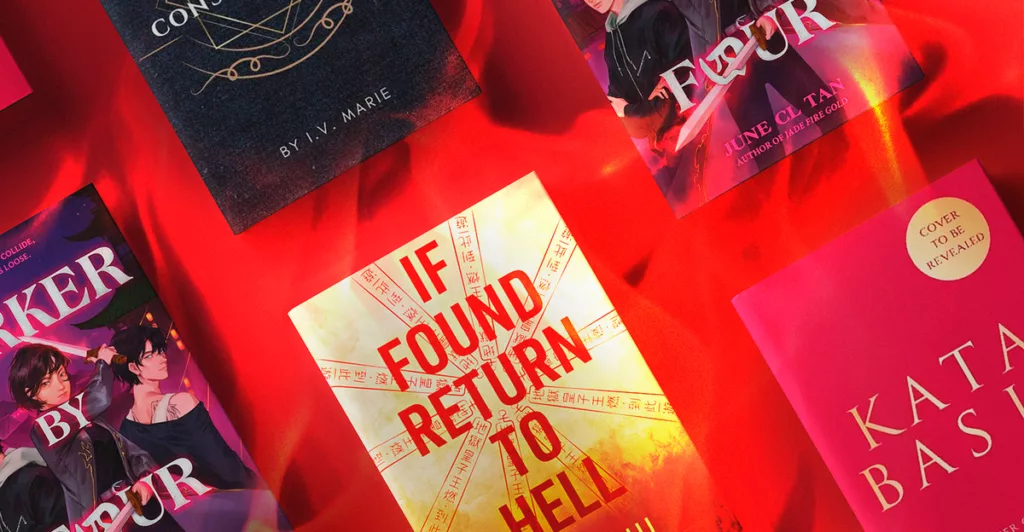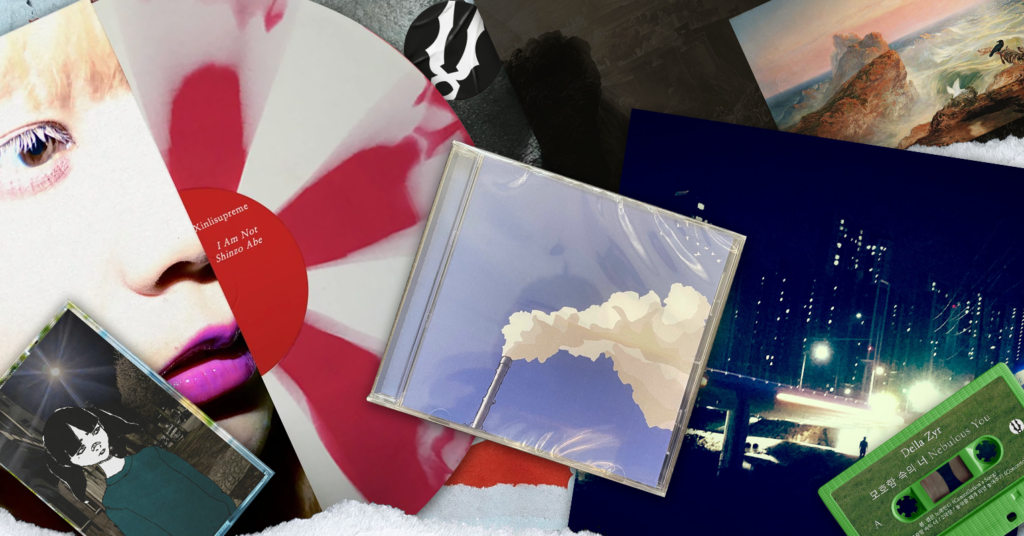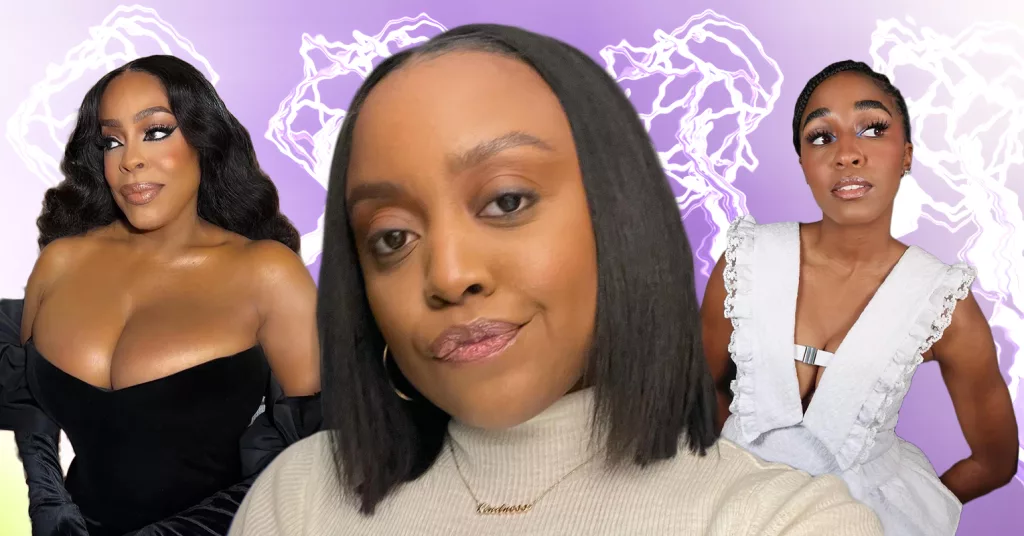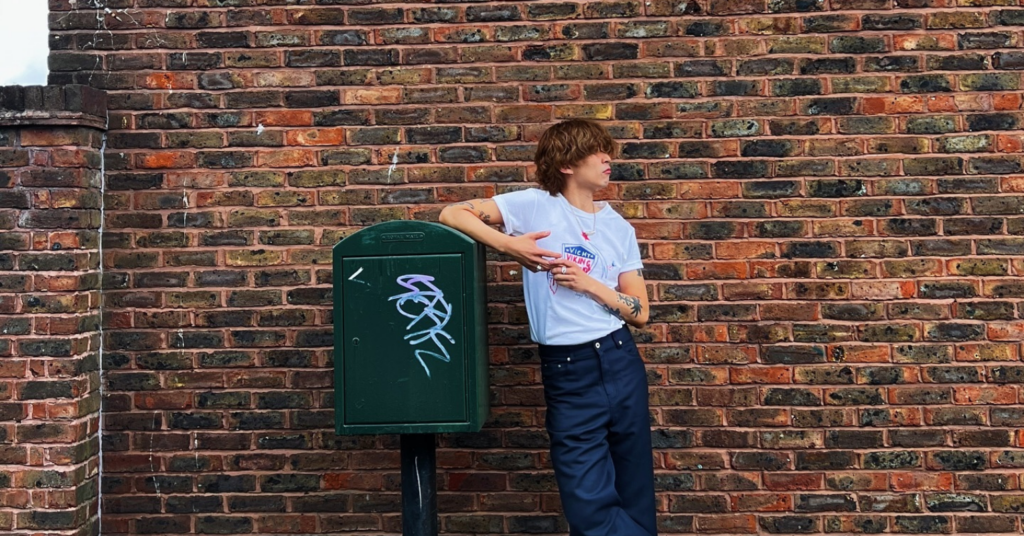Director Grace Hanna Transcends Time and Memory in Award-Winning Short Film “Lola”
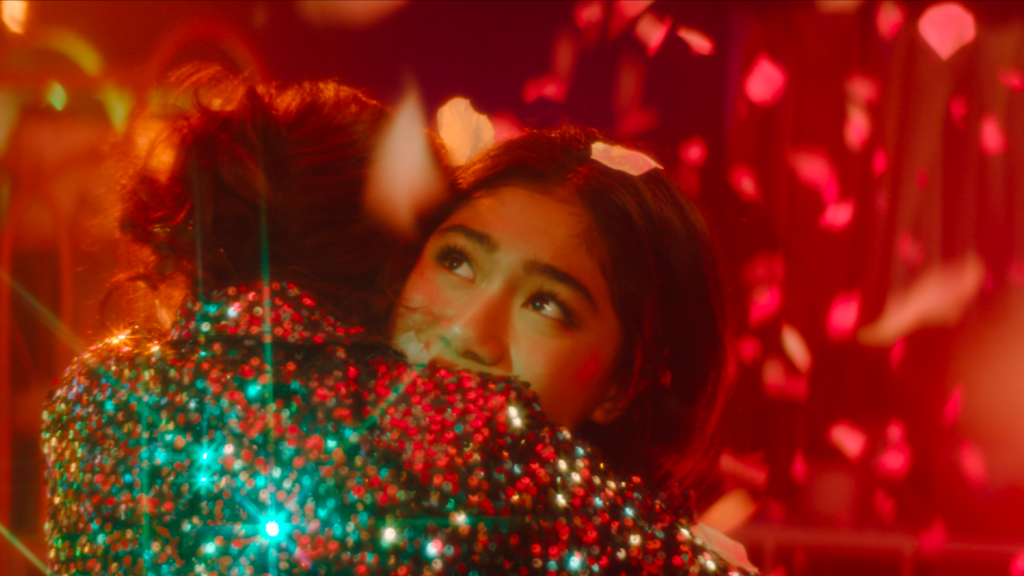
“I know it sounds cheesy,” Grace Hanna told EnVi in a virtual interview, “but the one thing that can transcend time and memories is love.”
For the Los Angeles-based writer and director, love is the essence of their craft. Hanna is the director of Lola, an award-winning short film about a 13-year-old science prodigy and her lola (grandmother) who has dementia. Tessie, the young heroine in question, devises a machine that transports her into Lola’s mind. In a last-ditch effort to save a precious core memory, Tessie and Lola must re-enact it perfectly. However, Lola’s dementia — personified as a small AI webcam named Mena — is programmed to disrupt their efforts by any means necessary.
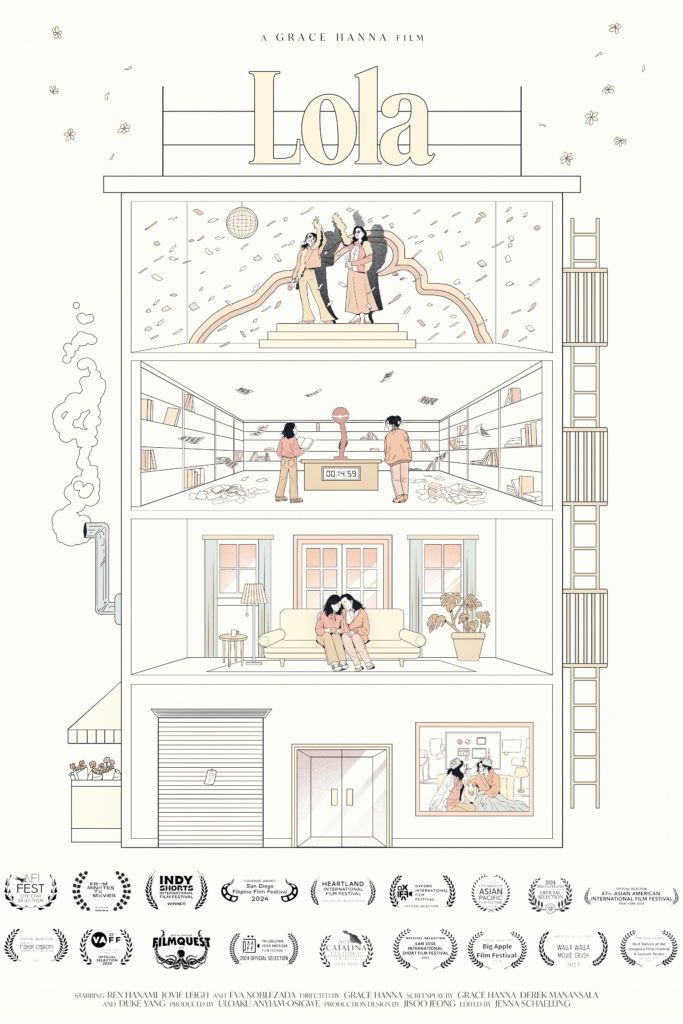
Lola has collected numerous recognitions since its debut in the indie film circuit, including screenings at multiple Oscar-qualifying film festivals. On December 4, 2024, it won the Loreen Arbus Focus On Disability Scholarship from the Television Academy.
EnVi chatted with Grace Hanna about their personal journey to creating Lola, the production process, and the importance of storytelling among Filipino Americans.
A Love That Outlasts Memory
The film was inspired by something near and dear to Hanna’s heart: memories with their own lola. Like many Filipino Americans, Hanna’s grandmother played a significant role in their upbringing. She not only “instilled a love of Filipino stories and culture,” but also “taught [them] to read and write.” Hanna recounted memories of the two of them walking to the library in the summers where they would “spend hours there reading.” However, when Hanna was in high school, the family received the difficult news that their lola had been diagnosed with dementia. “I couldn’t understand how the woman who had taught me all of these stories could be the one to forget them,” they said.
One of Hanna’s most emotional memories with their lola was during a visit to the Philippines. “It was long after she had forgotten who me or anyone in my family was. I just wanted to sit down and spend the day with her, but she was kind of having an off day. She just wanted to watch her Filipino soap operas, so I decided to go into the kitchen. I made her a bowl of mango ice cream because that was her favorite, and I just sat down with her. And for some reason, the moment I sat with her, the gravity of it all just hit me. I started to cry and feel sorry for myself.”
However, they came to learn that some connections are powerful enough to transcend memory. As Hanna recounted the moment further, they smiled with warm nostalgia. “My lola, very gently, slipped the bowl of ice cream over to me and gestured for me to have some. And that’s what we did. We sat and ate mango ice cream as we watched TV, and somehow, between these two different worlds, we were able to connect. I don’t know if she remembered who I was, but I know she felt like there was love there. I feel like that moment of hope and that connection is what inspired Lola.”
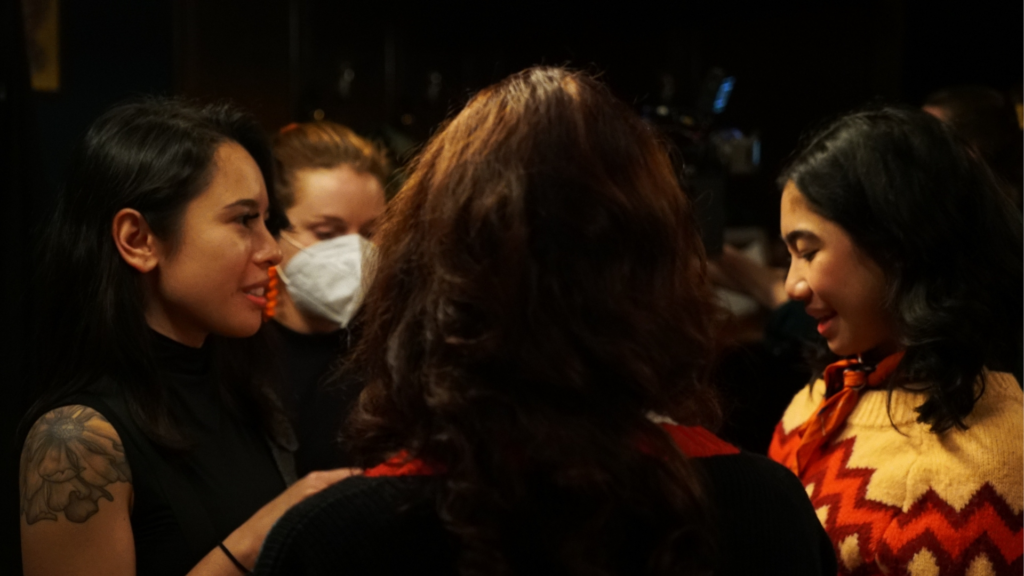
Building the World of Lola
One of Hanna’s favorite parts of writing and directing Lola was the world-building. Rich with shades of Everything Everywhere All at Once, fans of the multidimensional masterpiece can find similarly riveting elements in Lola. While the film technically takes place in the comfort of Lola’s bedroom, viewers follow Tessie through the majestic library of Lola’s mind. Memories are represented as books, which fly through the air in disarray as Lola’s dementia worsens. To create this immersive setup, the team used a soundstage at the American Film Institute (AFI), where Hanna is finishing their graduate studies.
“It feels like a sci-fi [film], so it also feels vast. On the day of, we were like ‘This doesn’t look great at all,’” Hanna explained with a laugh. “But in post-production, the magic happens.” Regarding the magical elements of Lola, Hanna cited their lifelong love for sci-fi and fantasy. “I loved escaping into a world where I felt like I could belong — where I could root for the underdog. I think in general [it’s] because of how I grew up, so that came very naturally to me.”
As for creating the film’s main characters, Hanna drew from the richness of a grandmother and granddaughter’s generational gap. They also wanted to subvert the typical dynamic of a guarded grandparent, instead opting to make Lola “fun, wacky, and zany.” Meanwhile, with her focus narrowed on the mission at hand, Tessie would be the “more serious” one. To convince the audience that Tessie could truly change her grandmother’s fate, Hanna wrote her as an active, empowered, and, of course, exceptional young girl. The next part of the creative process — and for some, the most crucial — was casting them.
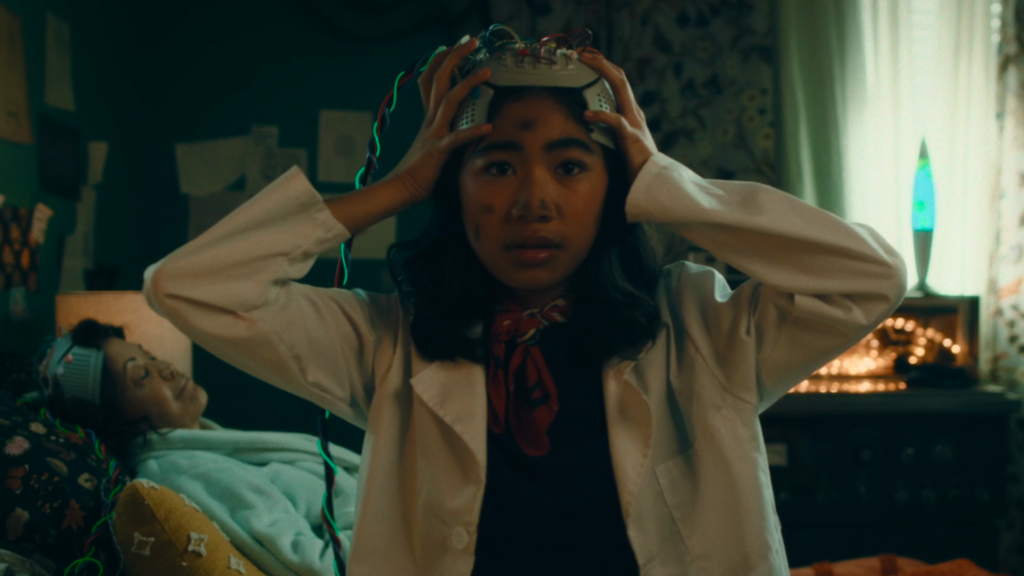
“You have this perfect vision of the actor and who the character is in your head, and then you get the reality of the actors who come in and add their own flair,” Hanna said. However, casting Tessie was no challenge for them, as they already had young actress Jovie Leigh in mind for the role. Hanna met Jovie while working on their first AFI project and, six months later, reached out with the casting call for Lola. All that was left was finding the perfect Lola for Jovie.
“We had to find someone with chemistry and a genuine connection to Jovie. I just wanted her to feel comfortable with whatever actor she was paired up with, so we did a ton of chemistry reads,” Hanna explained. “When Ren [Hanami] came in, they literally acted like grandma and granddaughter. In one scene, Jovie put her feet up on Ren and I was like ‘Is this okay?’ but Ren was totally fine!”
As for maximizing the film’s stakes, Hanna heeded the words of a past writing teacher: “Get in late, get out early.” From the beginning, viewers learn that Tessie is about to undergo her final attempt at recovering Lola’s memory. She specifically seeks out a time they sang karaoke together — a beloved pastime in Filipino culture — hoping to preserve it. However, with Mena taking every opportunity to provoke and sabotage her, the pair’s borrowed time increasingly thins. The tension is palpable, with the clock ticking down to Lola’s dementia prevailing over the rest of her mind.
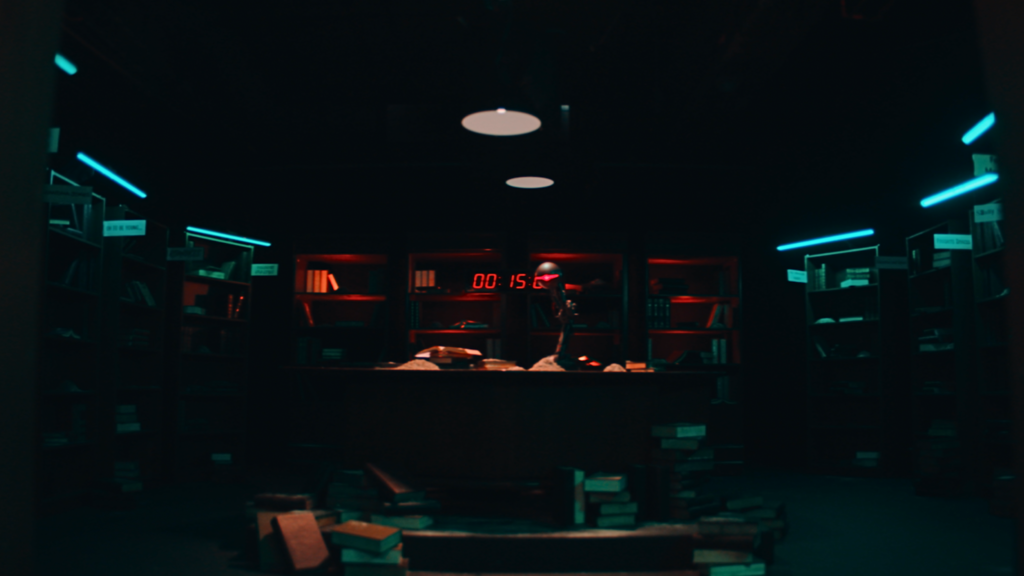
Desperate and frenzied, Tessie keeps resetting the karaoke memory until Lola eventually implores her to stop. Viewers witness Tessie hit an emotional low as Lola confesses to a devastating truth: changing their outcome is impossible. Tessie responds by asking what the purpose of all the trials was, to which Lola shares that she complied as a means of spending time with her. Now faced with the impending doom of Mena’s timer hitting zero and having no way out, Lola asks to make the most of their final moments together.
Unpacking the Film’s Closing Sequence
While the film pulls at viewers’ heartstrings with its bittersweet realism, it also evokes a sense of childlike whimsy. Through fantastical elements, animated scenes, and bright pastels, the closing montage of Lola is emotional, joyous, and rich with wonder. As the inevitable wreaks havoc on the library of Lola’s mind, she and Tessie gallivant from room to room. This sequence is beautifully chaotic: books fly through the air, clothing and colors transform with each passing scene, and visuals overtake dialogue. Instead, a heartfelt rendition of “Auld Lang Syne” plays — the song that Tessie and Lola sang during karaoke — covered by Broadway star Eva Noblezada.
“While we were kind of punching people in the gut emotionally, we also wanted to give them something to remember,” Hanna explained regarding Lola’s final scenes. “These are the last few moments that they’ll have together while Lola remembers [Tessie], and we thought that contrast would resonate with a lot of people.”
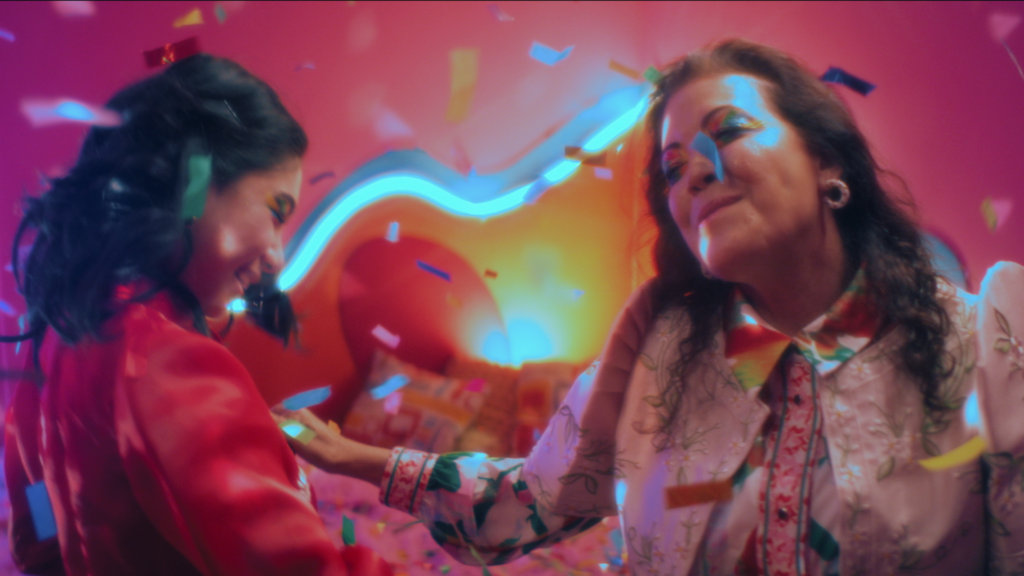
The film closes with a ten-second countdown until Lola’s memory is completely wiped. In one clip, she pulls Tessie into a tight embrace and closes her eyes. In another, the duo jumps on a bed together, laughing and smiling like children. The film ends just as the countdown is finished, but viewers do not see the moment Lola loses her memory. Instead, they are left with a visual of her gazing at Tessie with a blissful smile, enraptured by the euphoria of their shared joy. This is the version of Lola that Tessie fought long and hard to protect, and it is the final image that viewers are left with. “Sometimes, it’s easy to forget what matters,” Hanna emphasized. “I wanted Lola to inspire people to enjoy every moment they have. Life is short and love is fleeting.”
Wrapping up the interview with EnVi, Hanna also reflected on the larger role of storytelling among Filipino Americans. “We are a culture of stories and we are the stories we tell ourselves. Even if the people we love don’t remember, we are the keepers of their memories. Through generations, we need to pass them down to remember those who came before us, our land, our culture, and our traditions. To know the story is important to knowing the people.”
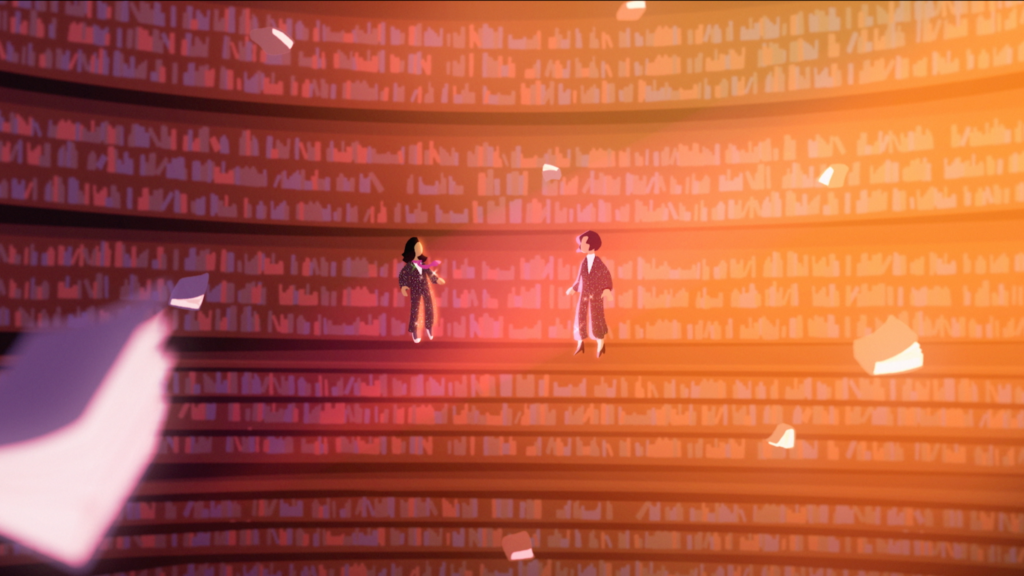
Lola will be featured at the Big Apple Film Festival taking place until December 12. To keep up with Grace Hanna’s journey and more upcoming screenings, check out the official Lola website and follow them on Instagram!
Looking for more films to add to your watchlist? Check out EnVi’s lineup of new releases!
